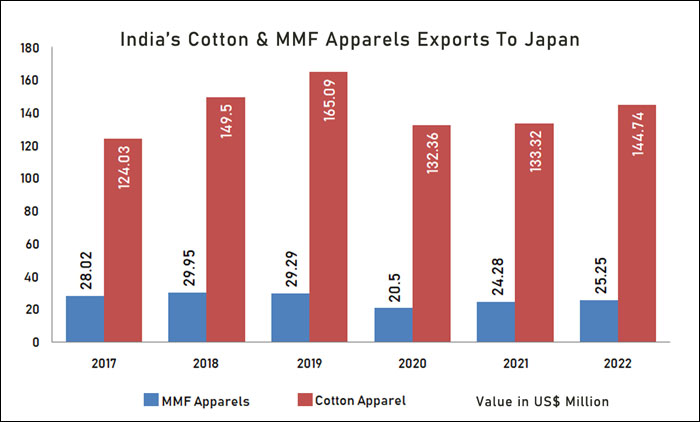
India's garment sector has long been a significant contributor to the country's economy, but its presence in Japan's import market remains relatively small. AEPC's chairman underscored the strategic importance of expanding this footprint, noting that Japan's demand for high-quality, reasonably priced garments aligns well with what Indian manufacturers can offer.
The Indo-Japan FTA, in effect since 2011, has provided a framework for reduced tariffs and enhanced trade cooperation. Despite this, Indian garment exports to Japan have not seen substantial growth. AEPC's call to action aims to rectify this by encouraging domestic producers to capitalize on the FTA's benefits and increase their market share.
Industry analysts suggest several factors contributing to India's limited presence in Japan. These include a lack of targeted marketing efforts, insufficient understanding of Japanese consumer preferences, and competition from other countries like China and Bangladesh, which have a more established presence in the Japanese market. To address these challenges, AEPC is advocating for a concerted effort to promote Indian garments through trade fairs, exhibitions, and direct engagement with Japanese buyers.
Recent developments indicate a positive shift. Several Indian garment exporters have begun to focus on Japan, tailoring their products to meet the specific demands of Japanese consumers. This includes paying close attention to quality, design, and sustainable production practices, which are increasingly important to Japanese buyers.
A notable trend in the industry is the growing emphasis on sustainability. Japanese consumers are becoming more environmentally conscious, and there is a rising demand for eco-friendly and ethically produced garments. Indian manufacturers, with their focus on organic materials and sustainable production processes, are well-positioned to tap into this trend. AEPC has highlighted the importance of showcasing these strengths to differentiate Indian products in the competitive Japanese market.
The potential for growth is substantial. Japan's garment import market is vast, with annual imports valued at over $24 billion. Even a small increase in India's market share could translate to significant revenue gains for Indian exporters. AEPC is optimistic that with the right strategies and support, India can enhance its presence and secure a larger portion of this lucrative market.
Key players in the Indian garment industry are already taking steps to realize this potential. Leading exporters are investing in technology and innovation to improve production efficiency and product quality. Collaborations with Japanese designers and brands are also being explored to better cater to local tastes and preferences.
The Indian government is also playing a supportive role. Initiatives aimed at improving infrastructure, reducing logistics costs, and providing financial incentives for exporters are expected to bolster the industry's competitiveness. Additionally, efforts to streamline regulatory processes and enhance ease of doing business are seen as crucial to facilitating increased trade with Japan.
The push to expand India's garment exports to Japan is not just about economic gains; it also represents a strategic effort to diversify export markets and reduce dependency on traditional markets like the United States and the European Union. By tapping into the Japanese market, Indian exporters can achieve greater resilience and stability in their international trade operations.
AEPC's focus on leveraging the Indo-Japan FTA underscores the need for a proactive approach in exploring new markets and enhancing trade relationships. With coordinated efforts from industry stakeholders and government support, India's garment sector is poised to make significant inroads into the Japanese market, unlocking new opportunities for growth and development.
